An ANNIVERSARY SALUTE to the sci-fi classic…
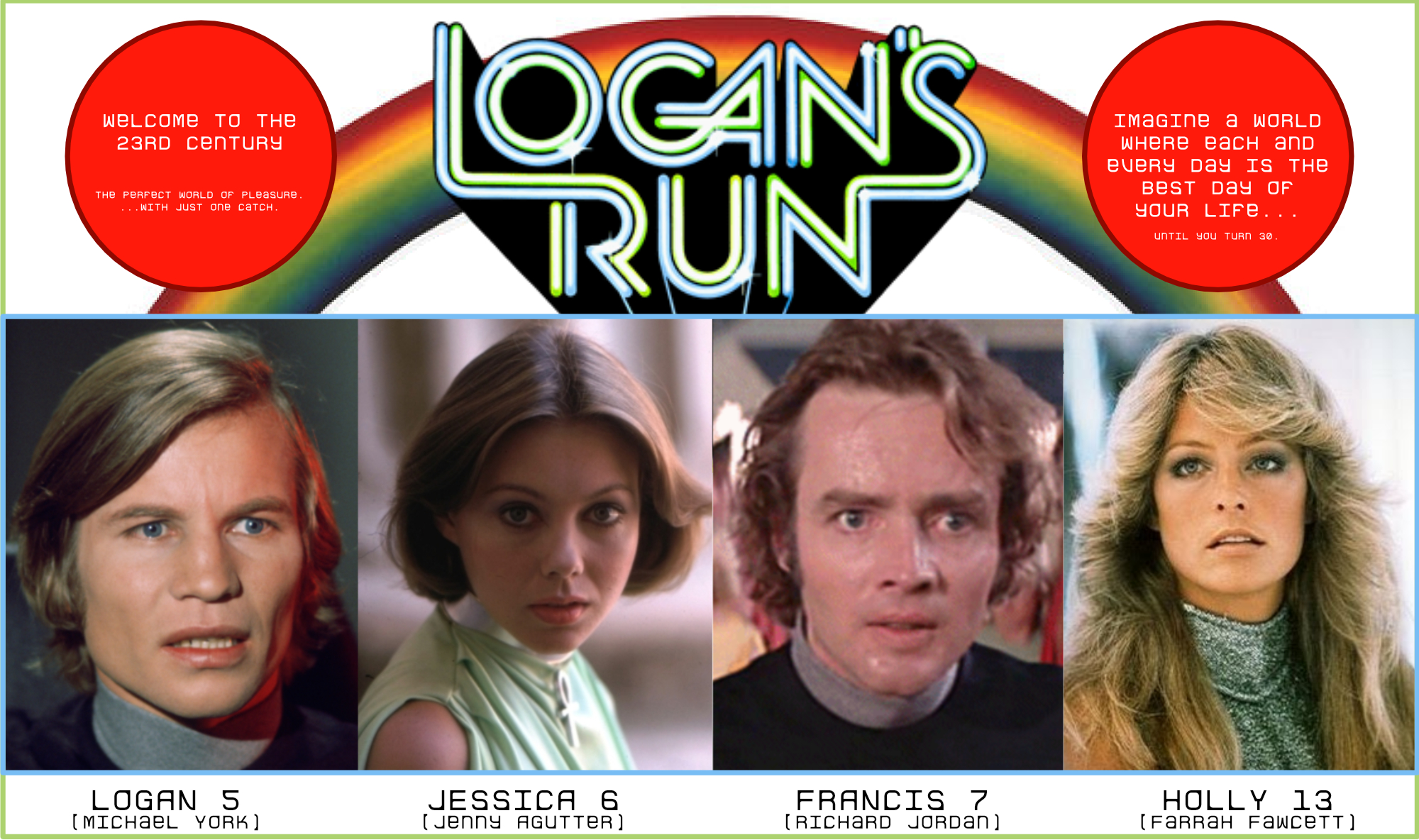
—
UPDATED 6/23/24: Logan’s Run came out 48 years ago, on June 23, 1976! Perfect time to reprint this piece from 2023! Dig it! — Dan
—
By WALT GROGAN
One of my favorite mid-1970s sci-fi flicks is Logan’s Run. Starring Michael York as the pompous Logan 5, Jenny Agutter as the plucky Jessica 6, Richard Jordan as the deranged Francis 7, and Farrah Fawcett-Majors in a cameo role as Holly 13, Logan’s Run is the epitome of a pre-Star Wars science fiction flick in look and feel and one of the last ones before what’s now called A New Hope was released in 1977.
Logan’s Run was very popular at the time. It even spawned a short-lived TV series. So I don’t think it’s quite fair to compare it to Star Wars other than to point out you should put yourself in a mid-70s mindset for special effects when viewing this somewhat-campy classic.
Logan’s Run, in a nutshell, takes place in a future, apparently utopian society where the needs and pleasures of its citizens are taken care of — with a catch: People cannot live beyond 30 and on “Last Day,” they must partake in a ritual called “Renewal,” where they are supposedly reborn. Logan is a “sandman,” a member of an elite police force whose goal is to eliminate runners, those who try to escape and avoid Renewal. That is, until Logan himself is turned into a runner to find Sanctuary — believed to be a haven for those who have bolted the domed city.
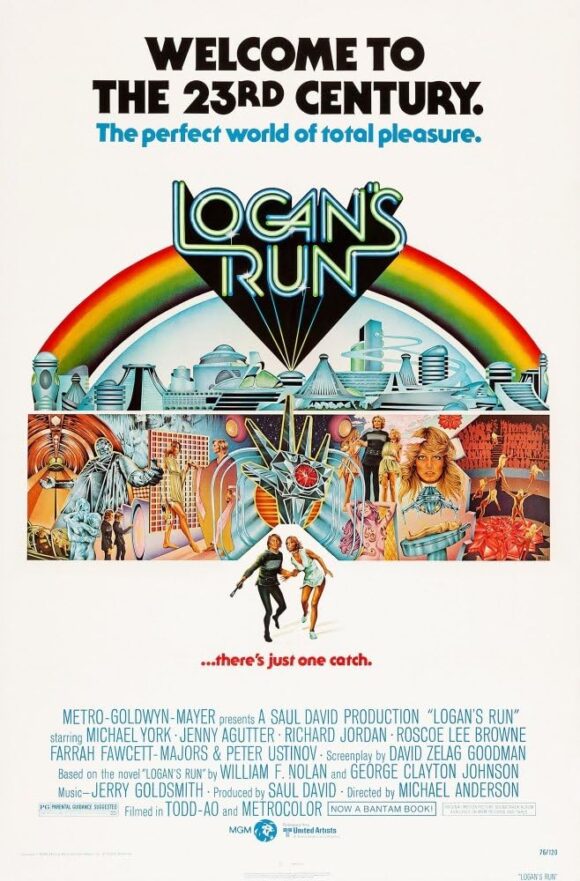
Logan’s Run, based loosely on the 1967 novel by authors William F. Nolan and George Clayton Johnson, was released June 23, 1976, and Marvel Comics released a 5-issue adaptation starting in October of that year, by writer David Anthony Kraft and artists George Pérez and Klaus Janson.
To celebrate Logan’s Run’s anniversary and Pérez’s artistic inventiveness, here are 13 screen captures from the movie paired with pages from the comic, showing how the penciller chose to adapt certain scenes.
SPOILERS FOR A 47-YEAR-OLD MOVIE BELOW:
—
For the opening splash page, Pérez takes a shot from later in the movie where Logan and Jessica are on the run and gives it his dynamic edge in this abstract shot.
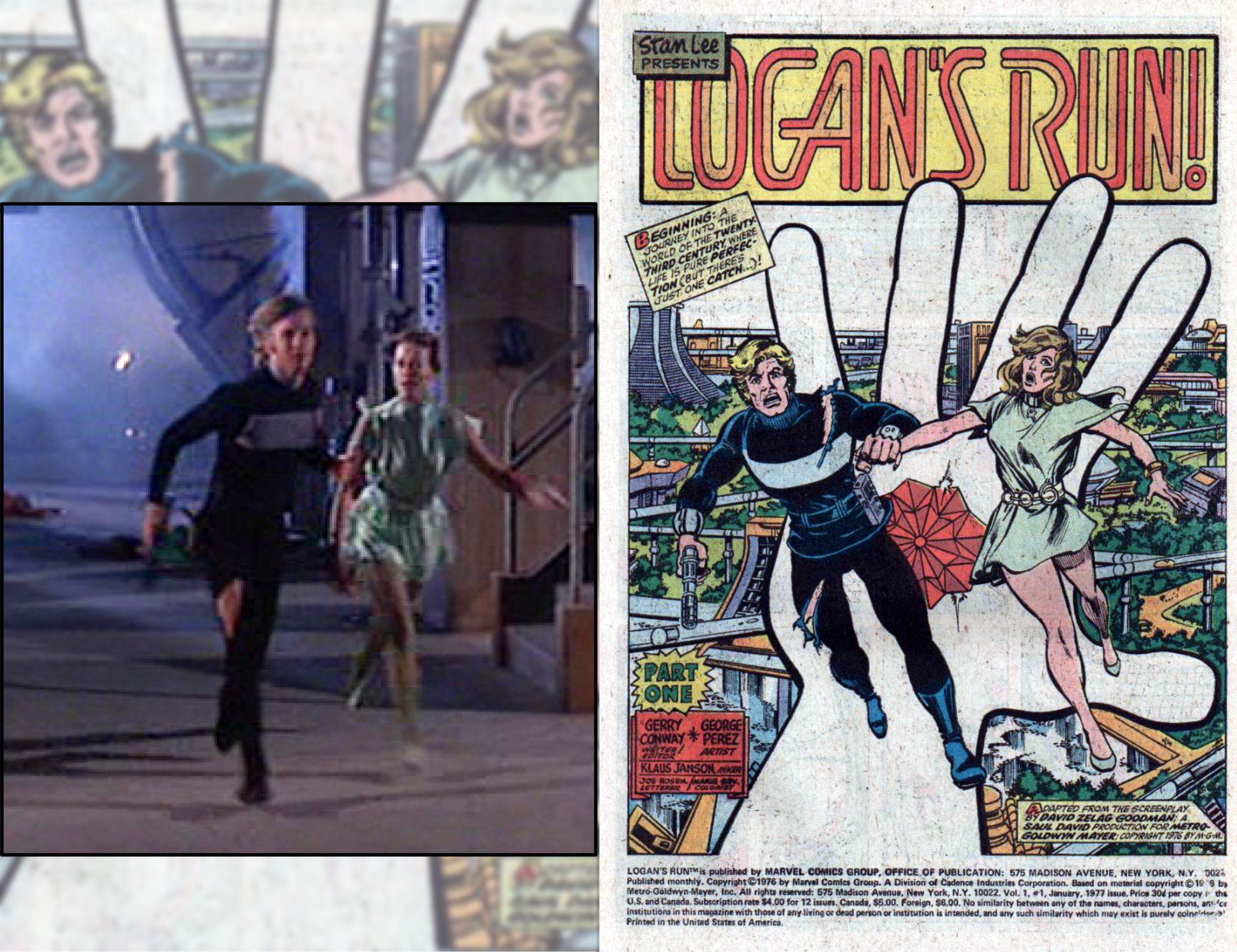
—
The movie boasts an impressive miniature set of Logan’s city.
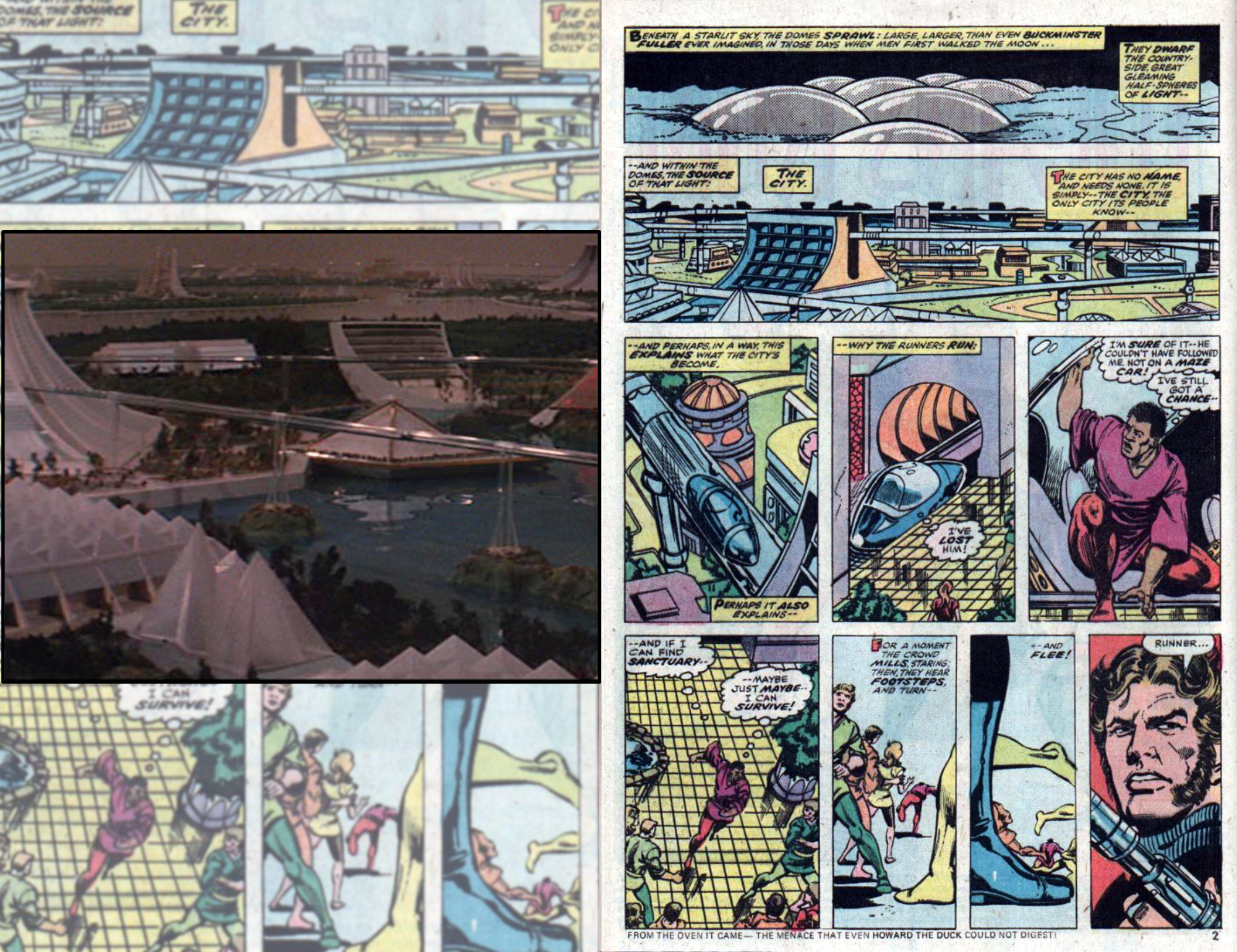
—
One of the highlights of the movie is the “Renewal” ritual and here Pérez uses a bird’s eye view of the floating Last-Dayers.
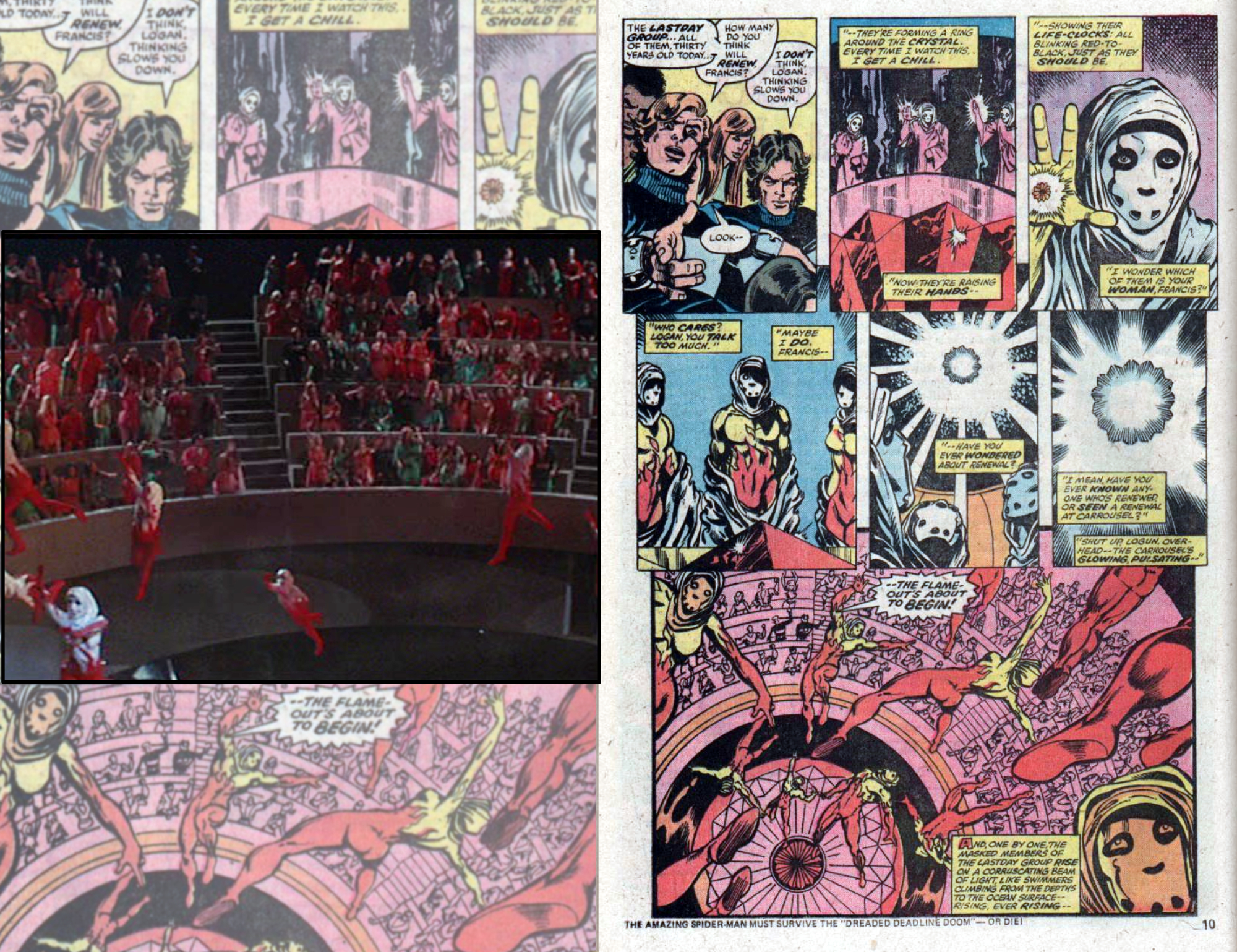
—
After Logan dispatches a runner, he is debriefed by a computer, presumably artificial intelligence. Pérez does an exceptional job with a mostly expositional scene.
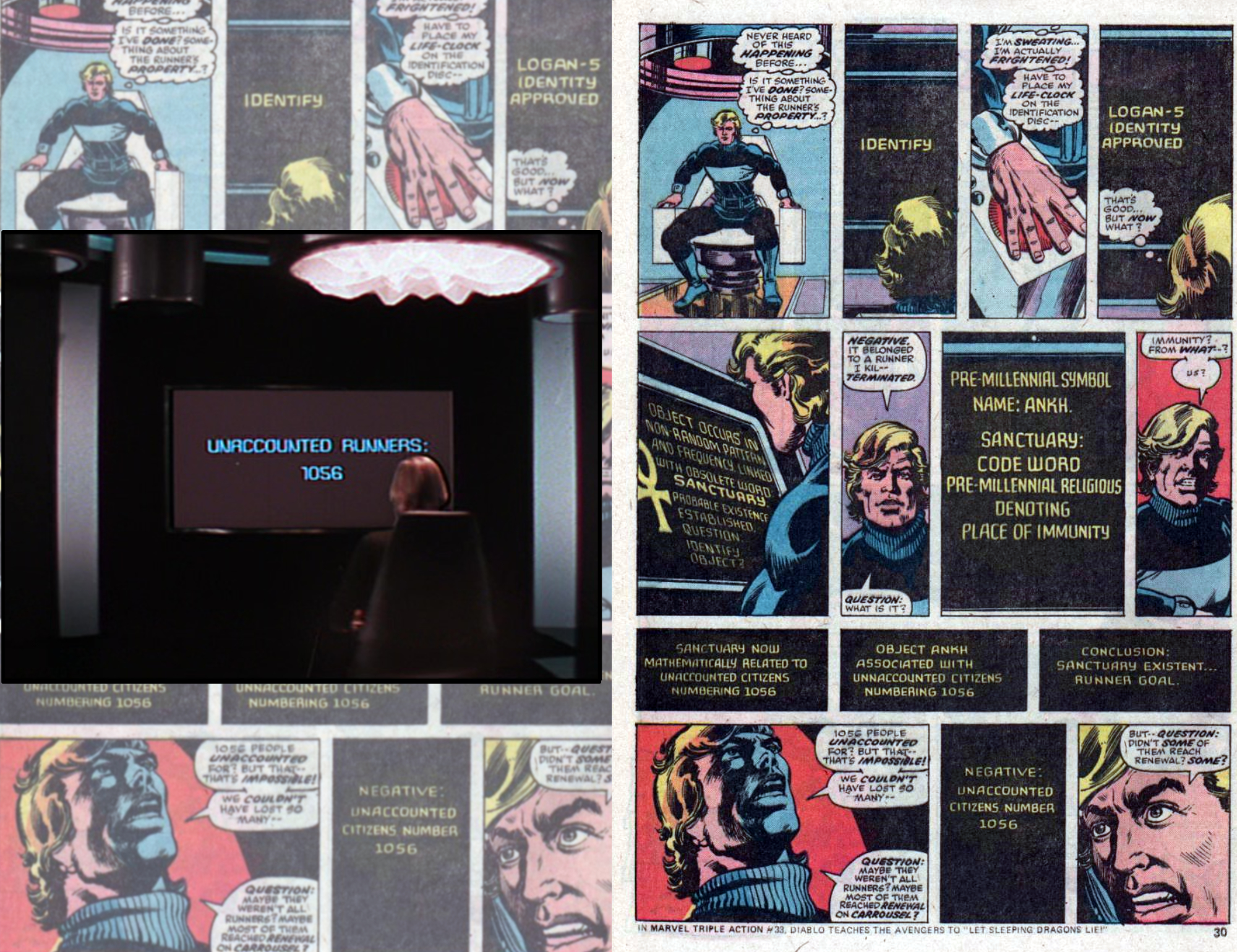
—
The AI resets the color-coded “life clock” on Logan’s palm, turning him into the age of a runner so that he can infiltrate the underground and locate Sanctuary.
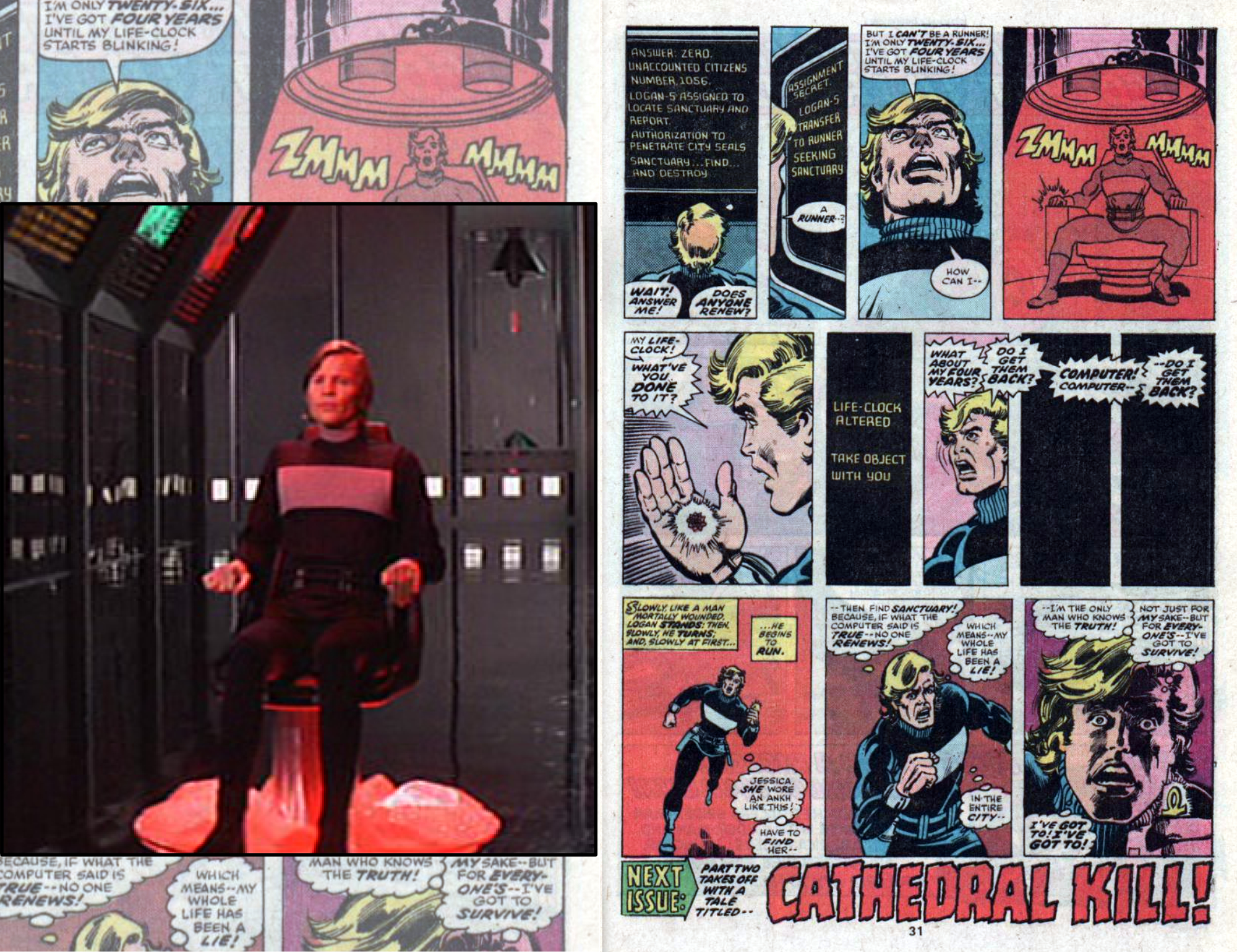
—
Pérez turns this static scene dynamic by having Logan race into the gym to confer with his fellow sandman, Francis.
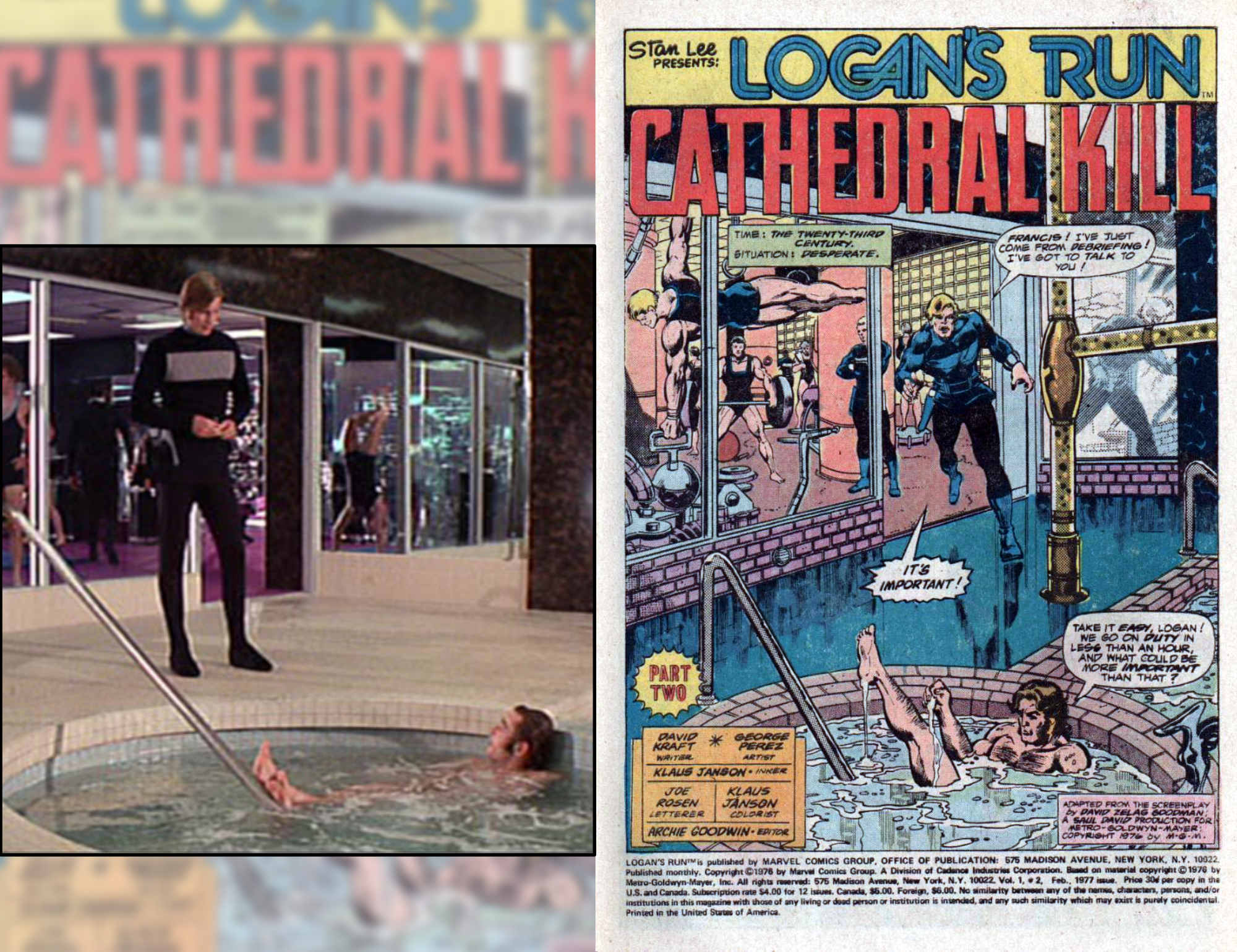
—
This is one of my favorite closing Pérez splashes. George reframes Francis’ killing of a runner and gives it more gravitas.
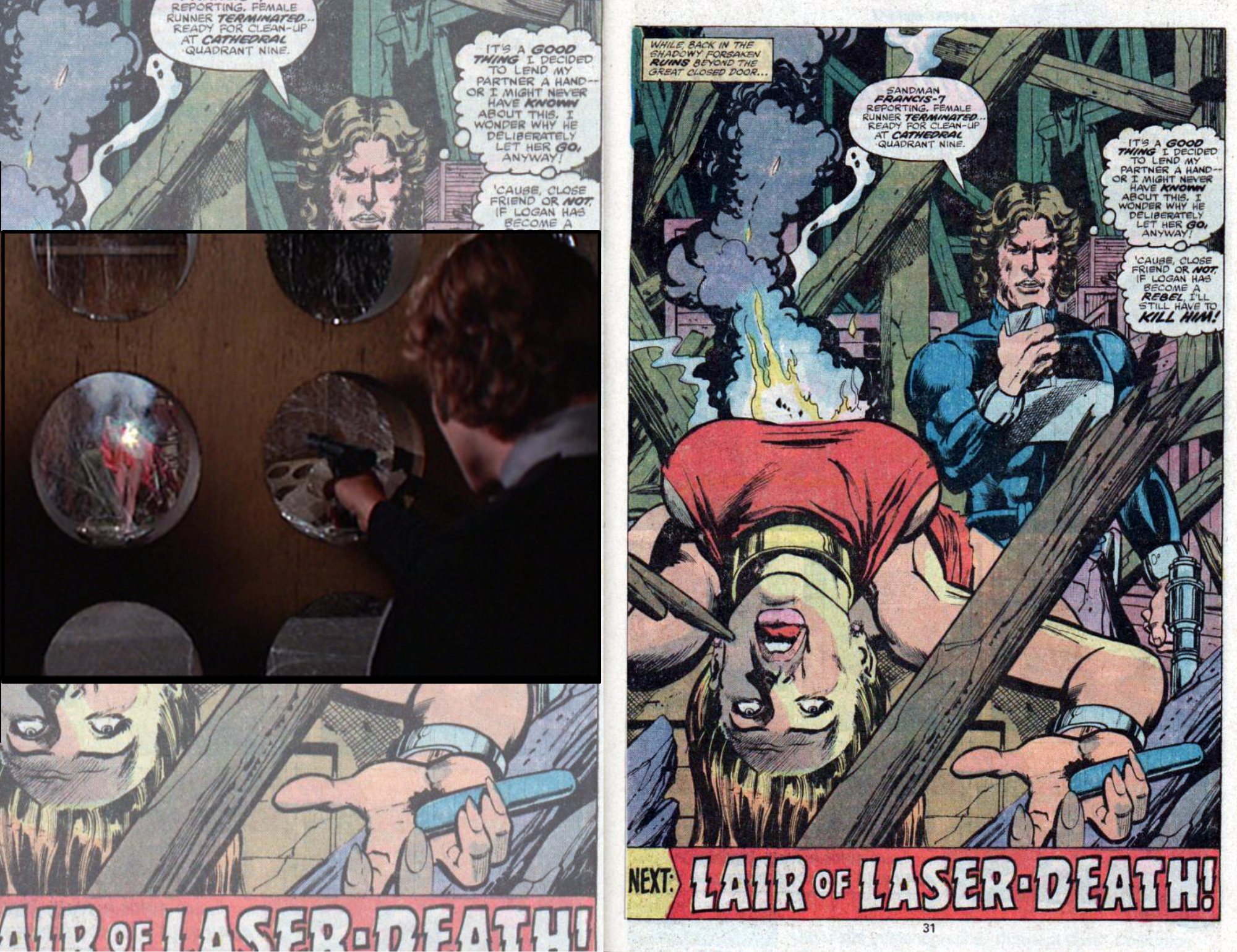
—
Here Pérez turns a dolly shot in the New You office, where citizens go to get healed or change their appearance, and turns it into an abstract splash page.
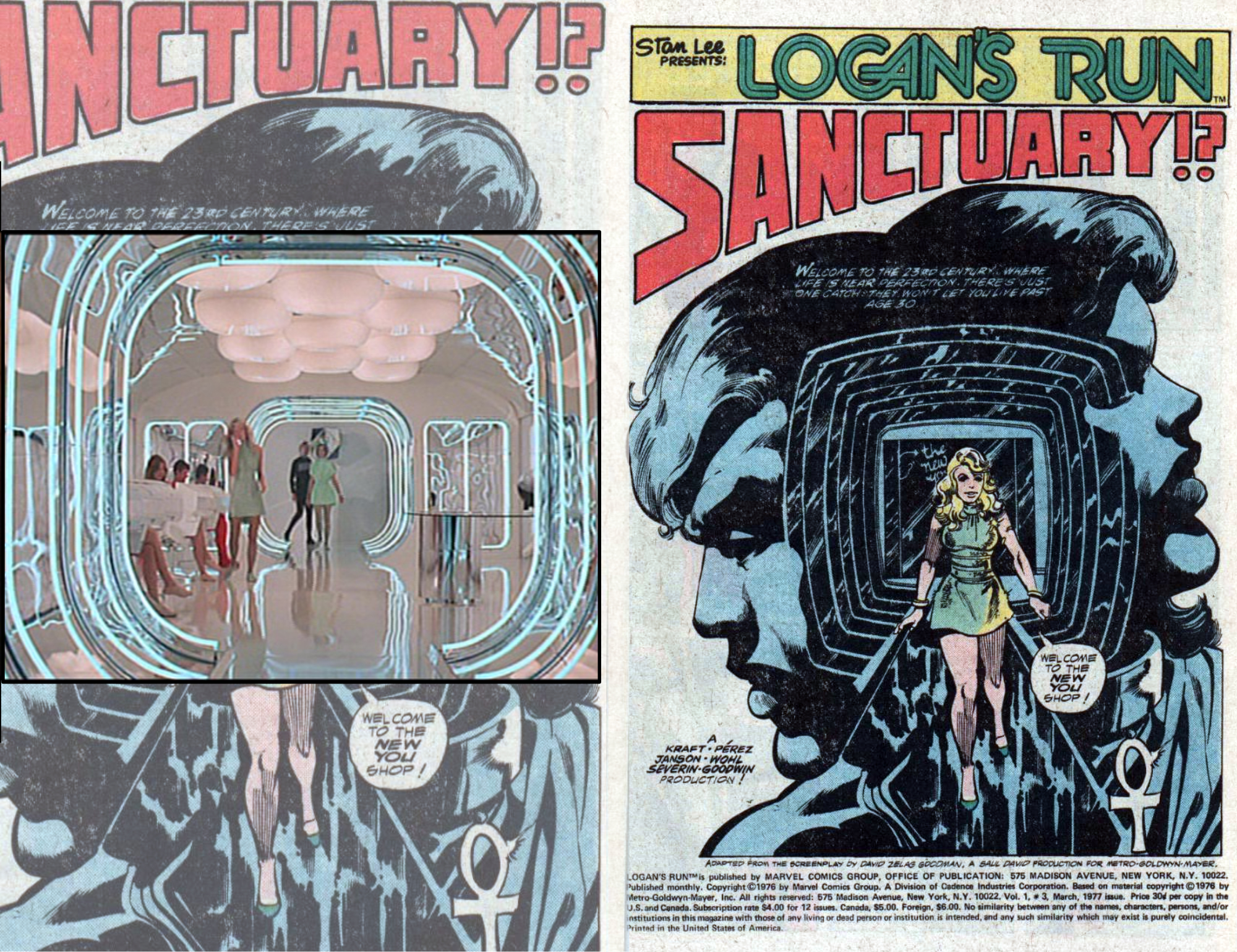
—
One of the big villains of Logan’s Run is Roscoe Lee Browne’s Box. Box was not one of my favorite designs in the movie but George makes him more menacing.

—
Here, again, George takes a relatively static shot and gives it life by turning the camera and drawing a more dynamic pose.
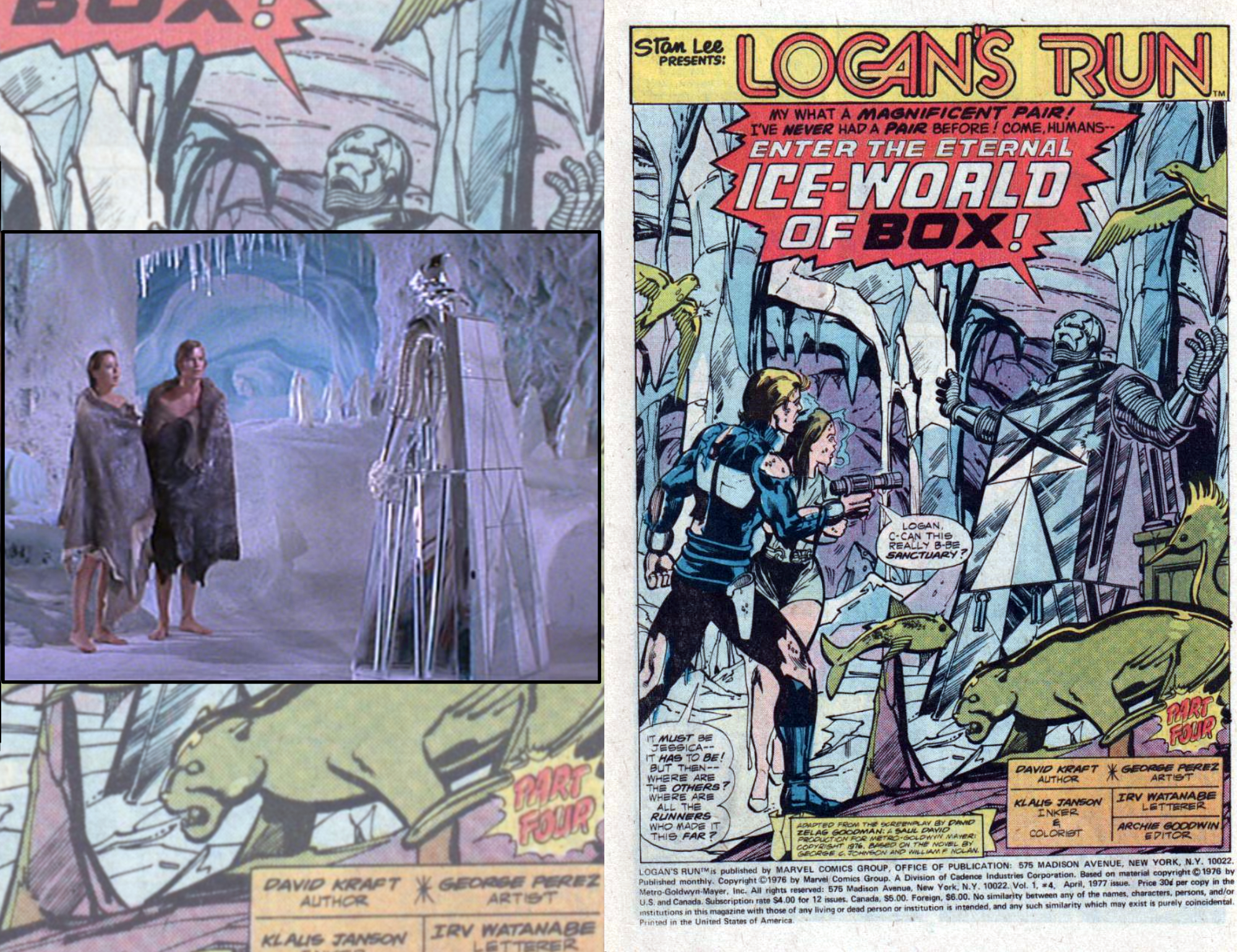
—
The maniacal Francis catches up with Logan and Jessica! Here, George turns the scene into an impressive triptych.
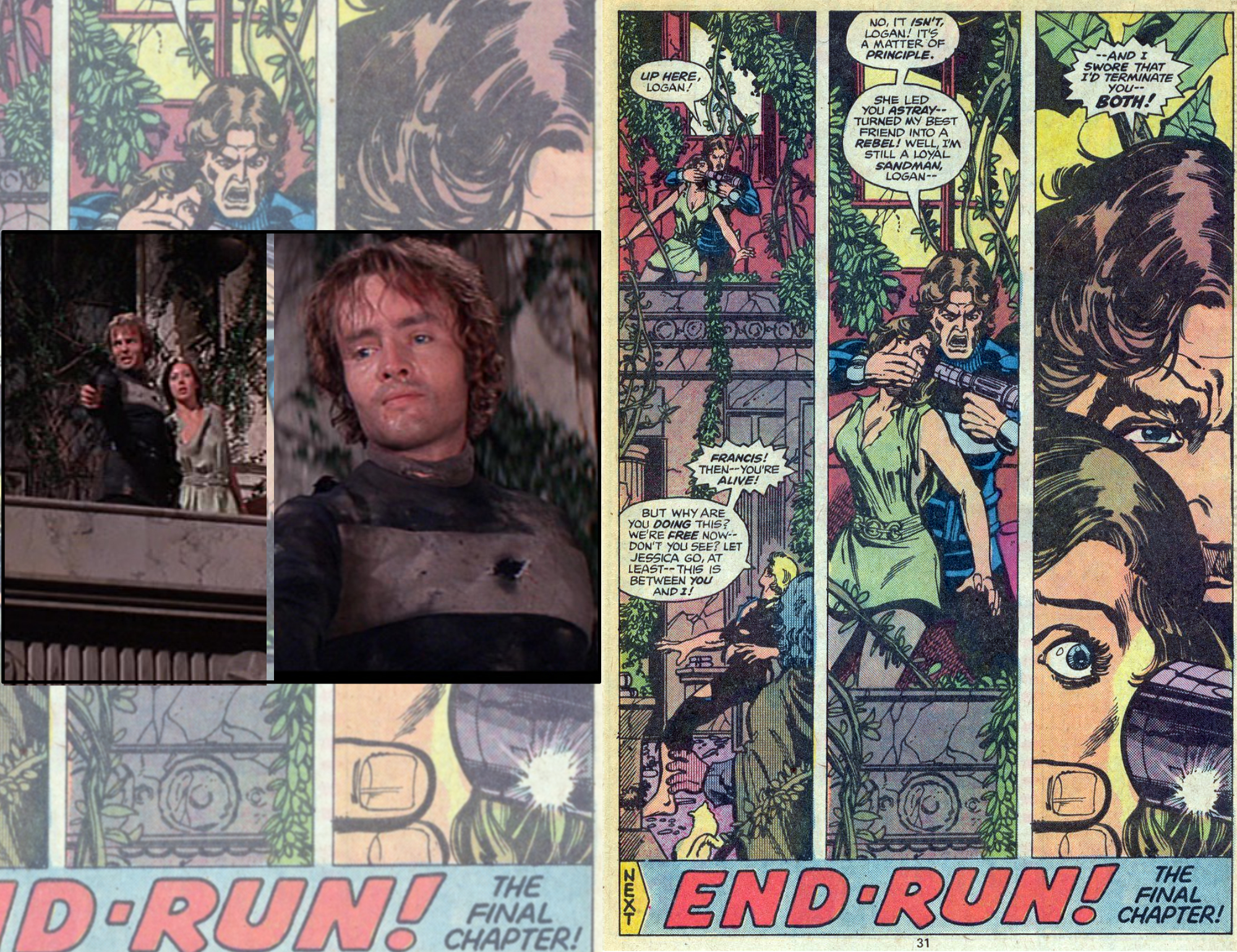
—
Pérez turns the camera around and switches from a worm’s-eye view to a bird’s-eye view in this nicely-rendered splash page.
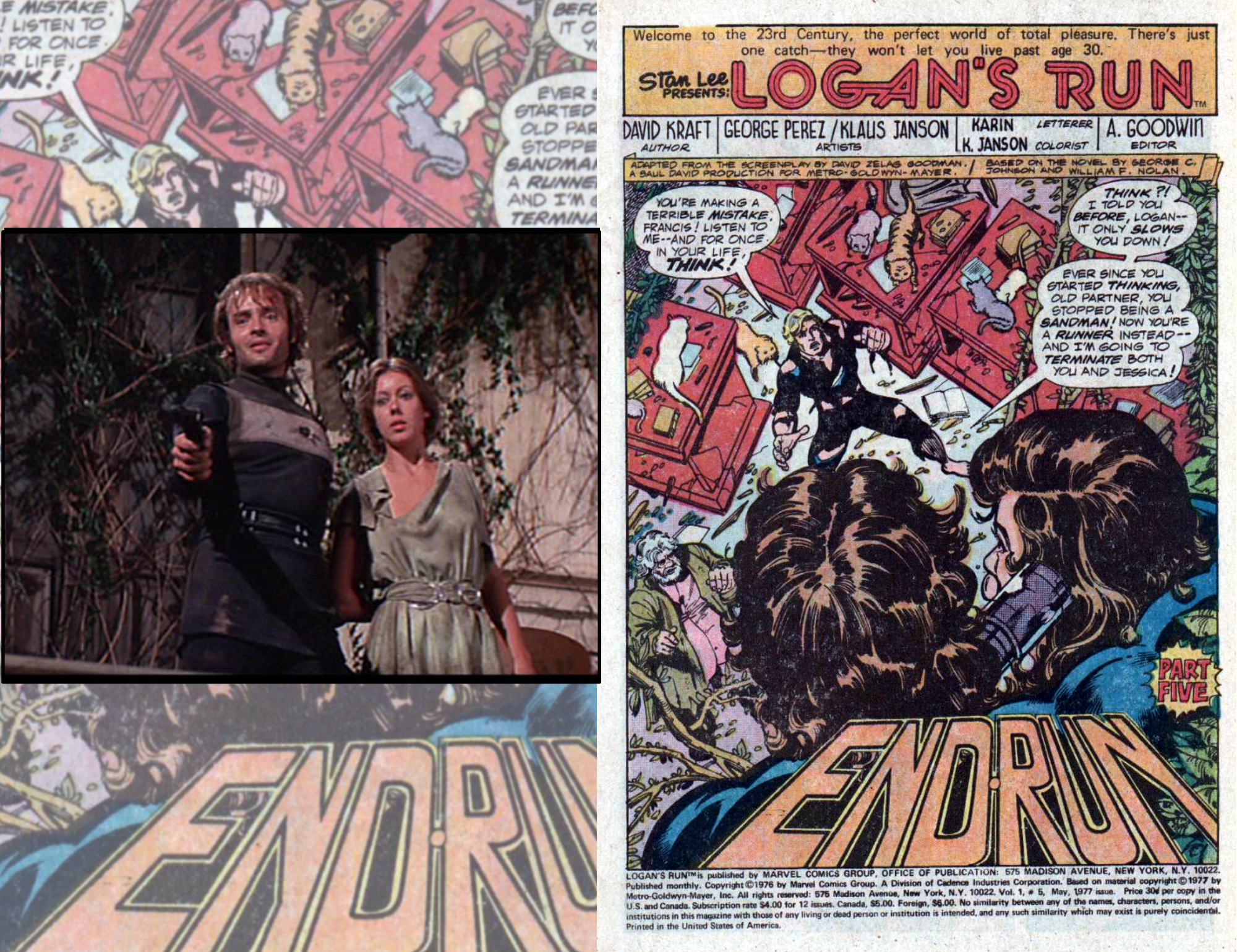
—
George finishes up the adaptation with a series of shots focusing on Peter Ustinov’s Old Man and Logan and Jessica.
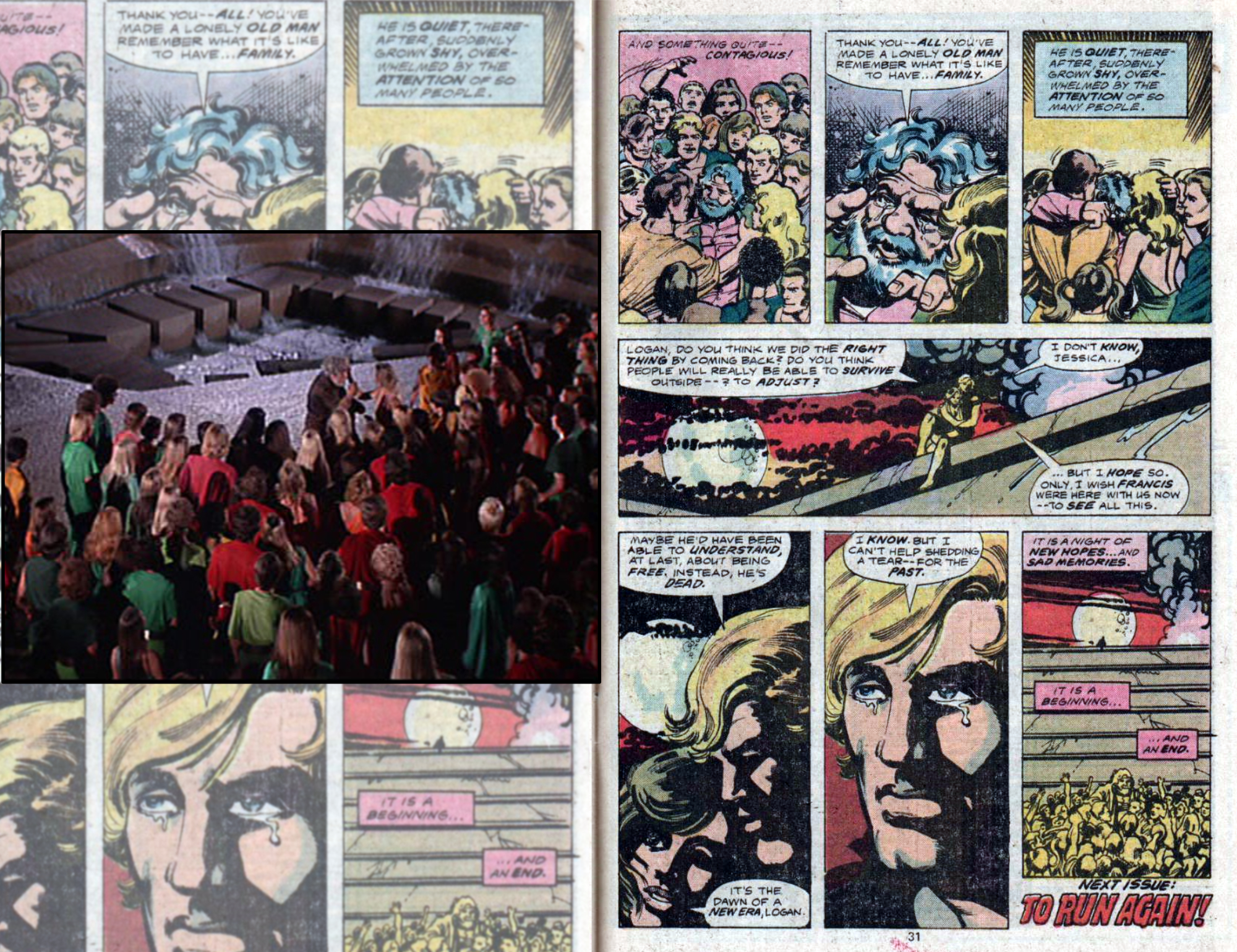
—
Logan’s Run is one of my favorite movies and I loved that George Pérez drew the Marvel Comics adaptation. This story is certainly rife with possibilities for a remake either as a major motion picture or as a limited or ongoing series. C’mon Hollywood! Do it!
—
MORE
— LOGAN’S RUN: Almost 50 Years of Post-Apocalyptic Hedonism. Click here.
— Check out THE FILM AND WATER PODCAST episode on LOGAN’S RUN. Click here.
—
A 10-year-old Walt Grogan fell in love with the Big Red Cheese thanks to essays written by Dick Lupoff and Don Thompson in the paperback edition of All in Color for a Dime, released in 1970 and bought for him by his father off a paperback spinner rack in a liquor store on the South Side of Chicago. Walt runs The Marvel Family Web Facebook page devoted to all incarnations of the Fawcett/DC Captain Marvel and blogs about Captain Marvel at shazamshistorama.com.

June 23, 2023
Love what Perez did on this series. Great stuff!!
August 4, 2023
Wow. I loved Logan’s Run since I was a kid, and now you’ve reminded me of how great the comic was. (If I still have my issues, they’re in some attic box somewhere ,,) Great job at pointing out Perez’s awesome work!
June 23, 2024
Not a fan of the comic when it came out, it was not to my ten year old’s style as it wasn’t cape driven. But as I fan of Perez, I think I need to pick this up. The run is relatively inexpensive and there are 2 additional issues after those listed here by other A-listed artist of the day. Eg Gil Kane & Terry Austin There’s also a Thanos back story.
Looks like there was another 2 runs at the story. One was in 1990 and another more recently in 2010.
Thanks for sharing a really fun look back.
June 23, 2024
With all the retro reprints focusing on 1970s-1990s material being collected by both Marvel and DC the Perez issues would be a great addition to a collection.
Sons of the Tiger and White Tiger from Deadly Hands of Kung Fu magazine.
Throw in the Creatures of the Night Man-Wolf issues and the Inhumans most of which have never been reprinted.
June 24, 2024
Very cool. I had three or four of these issues. A couple from the adaptation, and some of the issues that followed after. I used to watch the show on TV all the time. There was also a Logan’s Run annual published by Brown Watson and also a B&W serial published in ‘Look-In’ magazine in the 70s.